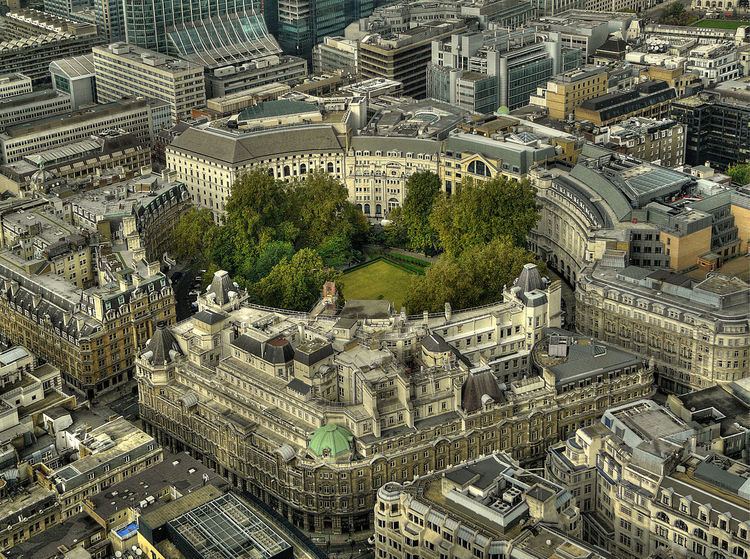 | ||
Finsbury circus
Finsbury Circus is a park in the City of London, England; with an area of 2.2 hectares it is the largest public open space within the City's boundaries.
Contents
The 'circus' of the name reflects the elliptical shape of the space, similar to the circus venues of ancient Rome, in this case with a long axis lying east-west.
It has an immaculately maintained Lawn Bowls club in the centre, which has existed in the gardens since 1925.
A bandstand, built in 1955, is located nearby.
1 finsbury circus justice now
History
The circus was created in 1812 on an area which was originally part of Finsbury Manor, having existed since 1527, on which the second Bethlem Royal Hospital had stood since 1675. The original houses, the last of which were demolished in 1921, were intended for merchants and gentlemen, but were soon broken up internally and leased for solicitors and other professions. The gardens, featuring a circuit of lime trees, were developed by William Montague to the specifications of the architect George Dance the Younger in 1815. In 1819 the London Institution moved into "ingeniously planned and elegantly detailed" premises designed by William Brooks at the north end of the circus; it closed in 1912 and the buildings were used for the University of London until their demolition in 1936.
The circus was opened as a public park in the early 20th century, under powers granted to the City of London Corporation in the City of London (Various Powers) Act 1900. The gardens had previously been a private space for the use of the freeholders or lease-holders of the surrounding buildings, who objected to their compulsory purchase, fearing that their use by the public would create a nuisance which would lower the value of their property. The campaign to make them a public space was led by Alpheus Morton, deputy-Alderman for Farringdon Without and a member of the Corporations' Streets Committee, and the circus became known with the Corporation as "Morton's Park".
Fronting the northwest quadrant of the oval, with fronts on roads entering the Circus from the west stands Edwin Lutyens's massive Britannic House (1921–25, listed Grade II), designed for the Anglo-Persian Oil Company, which became BP; its free-standing architectural sculptures are by Francis Derwent Wood. It was built on the site of the last remaining original houses, and is now home to international law firm Stephenson Harwood.
The nearest Tube station is Moorgate, to the West, and the park is also close to Liverpool Street Station; both are within about two hundred meters. It is located in the Coleman Street ward.
Finsbury Circus has been used as the finish point for the Miglia Quadrato each year. In recent years it has also played host to the start of the Miglia Quadrato since the event start was removed from Smithfield Market.
Crossrail
During the years 1860-65 Finsbury Circus was threatened with demolition in favour of a railway station; public protests averted the loss, but in 1869 the oval was tunnelled for the Metropolitan Railway. Today Finsbury Circus is one of the main worksites for the construction of Crossrail in the area. From 2010 to 2016 much of the gardens will be taken up in order for the massive project to be constructed. It will be fully restored once construction work is finished, with a possibility that the fountains will be returned to full working order.
